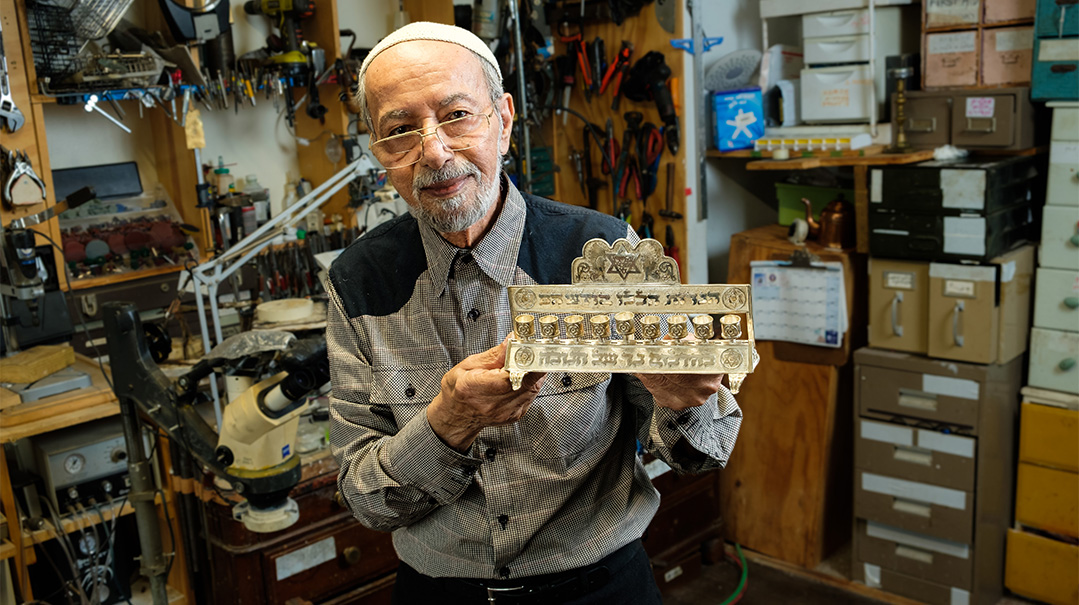Gold Standard
| July 5, 2022In Yossi Makais's little Baltimore workshop, precious metals are transformed into holy objects fit for the King’s table

Photos: Eli Greengart
With his talent outmatched only by his humility, you might never have heard of Yerushalmi artisan Yossi Makais. But in his little Baltimore workshop, precious metals are transformed into holy objects fit for the King’s table
As a longtime Judaica and Jewish art collector, I’m always on the lookout for undiscovered artifacts and esoteric treasures. So when I came upon the precious metals workshop of world-class craftsman and artisan Yossi Makais, a seventh-generation Yerushalmi living in Baltimore whose extreme modesty always kept him out of the public eye, I knew I’d found a hidden gem.
His is the story of two life journeys: a journey that began with a gift from Hashem — a talent of artistic design making beautiful jewelry and eventually, ritual Judaic items; and a second journey — realizing that Hashem was in his life all along, directing his path and pushing him forward.
Silver Lining
Yossi’s father’s family came to Eretz Yisrael from Morocco back in 1830, and his mother, born in Baghdad in 1927, settled in Jerusalem in 1930. She was a young bride — Yossi, the oldest of 12 siblings, was born in 1945 when she was just 18. Yossie’s parents were traditional, but not strictly practicing Jews, raising their large family in Jerusalem’s Bukharian Quarter where Yossi lived until he was 25.
Yossi was just a young kid when his mother noticed his talent for drawing and painting. His parents enrolled him in a boarding school headed by famous Israeli educator Moshe Tokayer, where for five years he developed his art talent mainly in drawing, sculpture, and painting. Tokayer recognized Yossi’s gifts, and personally took him under his wing, providing him with special instruction to maximize his potential.
“My father worked for the Jerusalem municipality and was in charge of creating and hanging the posters around the city announcing events, theater shows, movies and public activities,” says Yossie. “I worked for my dad for a few years before joining the IDF, and after my discharge, I began experimenting with various forms of artistic expression — I even tried ice sculpture.” But he’d soon discover that silver and gold fabrication of Judaic art was his calling.
It was a new field for him, though, so he approached two teachers from the Betzalel Academy of Arts and Design who also had a private studio, and asked them if they would teach him the art of silversmithing. They were quite skeptical because he had no formal training in the skill, but agreed to show him the basics of working with wax, explaining that whatever you can make in wax you can cast in silver. They gave him a wax block and told him to create a sculpture. After three days, he returned with a magnificent, tiny sculpture — David holding Goliath’s head. The teachers were so impressed that they gave Yossie unlimited access to the Bezalel library, where he became completely self-taught, studying everything available on the art of silver and gold silversmithing and sculpturing. It wasn’t long before he began created exquisite pieces for a jewelry manufacturer.
Oops! We could not locate your form.







